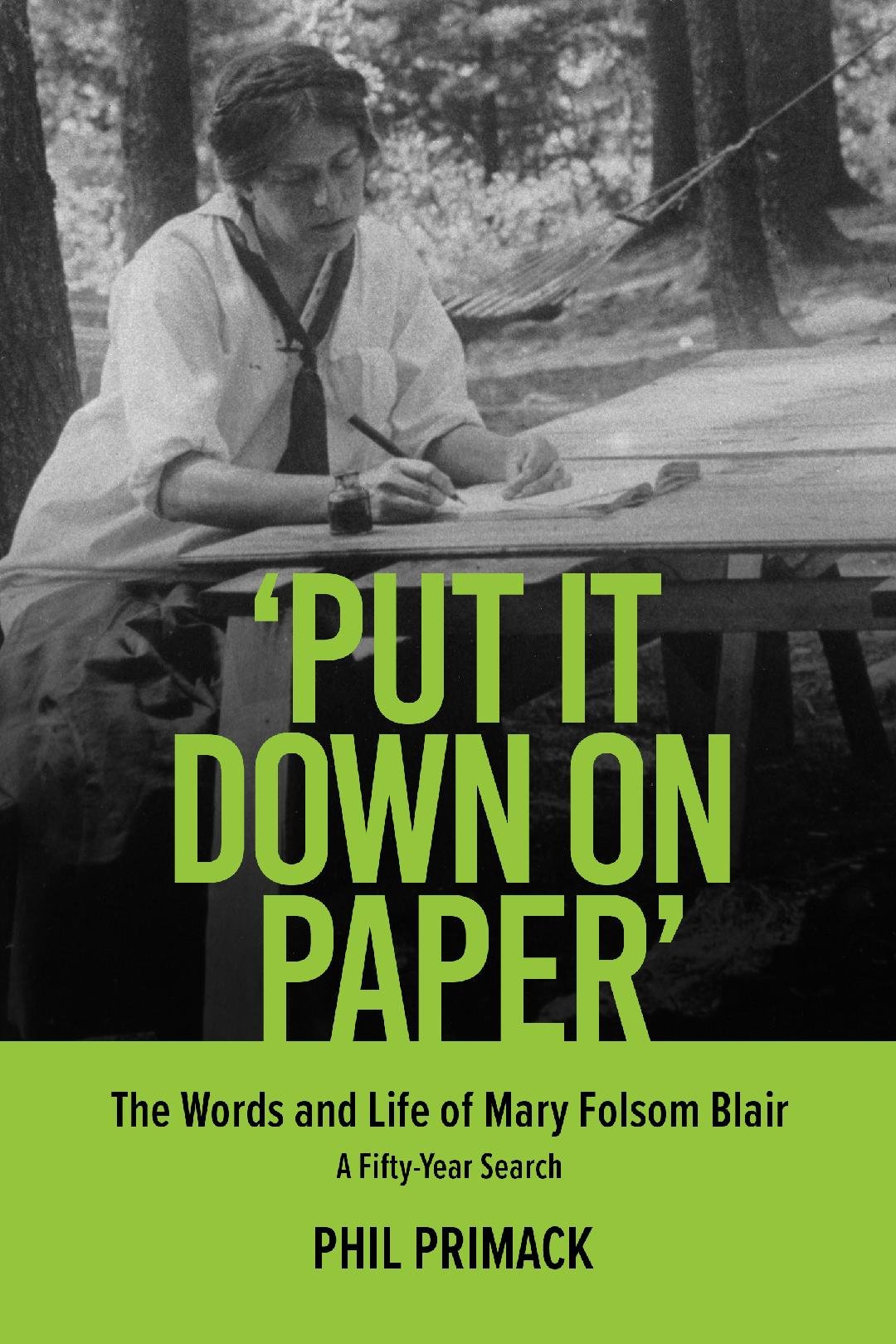‘Put It Down on Paper,’ The Words and Life of Mary Folsom Blair: A Fifty-Year Search, by Phil Primack (Loom Press, 2022)
A review by Ann Fox Chandonnet (9/12/22)
Every reader loves the tale of a long, arduous search, whether it is for gold in the Klondike, an ancient Inca city, a cure for cancer or prairie children kidnapped by Native Americans. If the search is successful, even better.
In the case of “Put It Down on Paper,” journalist and author Phil Primack essentially is smitten with a Quaker school teacher, Mary Folsom Blair (1891-1973).
Quakerism is just one of the engaging fragments of the belief system behind the Folsom Blair puzzle. Here is a woman who is unsure of her sexuality, who wonders in a poignant passage if two people truly can fit into one hammock. She inadvertently arranges marriages for her friends, but she remains single and in despair until she meets and marries her “hero on ice” when she is 36. She yearns for a child but none comes along. Fortunately, she has a heaven to escape to—a rural New Hampshire getaway, a small cottage she names Arcady.
Folsom Blair is an educational genius. She knows enough to feed students who are hungry, to let school out when memorizing has gone well, to be loving as well as strict with her pupils. She is not swayed by Victorian looky-loo’s who would criticize her swimming with her students or hiking the woods with young boys. She was a complete unknown as a diarist, but I would rate her right up there with Pepys for honesty and endeavor. Now her fascinating journals are, as a result of Primack’s efforts, archived in the Manuscripts of the Schlesinger Library on the History of Women at Harvard’s Radcliffe Institute for Advanced Study. In 1916, Mary was a “special student” in at Radcliffe, which now hoards her plain-spoken sentences like diamonds.
In 1974, completely by chance, Primack buys the house that Mary’s father built in 1870. It is stripped of personal belongings, but he is piqued enough by what he hears about her to track down relatives and finds her journals. Mary began her diary at age 15, an age when all females are trying to “find themselves” and their place in the world. She has a social life, blessed by friendship with two other women. She is unsure of herself, but secure in the bosom of Nature.
Nature is what Primack has in common with Folsom Blair, the shady glades of the New England forest. But as bits and pieces of information about her fall into his lap, he sees her as a kindred soul who takes life seriously and attempts to keep a record of “the pain that this life holds for women.” Her journals could be called “confessional,” but she has no aim to catch readers in a bathetic trap. She is a hardy woman who is still canoeing and sleeping in the open as she nears 80.
“Put It Down on Paper” is a remarkable story of one woman’s attempts to be honest with herself and lead an honorable life, no matter what. Not only does Folsom Blair commit her thought to paper, but she also writes them on the walls of Arcady, including a long poem about Pan as well as names and dates of her many visitors. This is a marvelous story of one courageous woman and of the dedicated detective who sought her out: an absorbing memoir, an evergreen treasure for those who study the history of turn-of-the-century women in New England.

